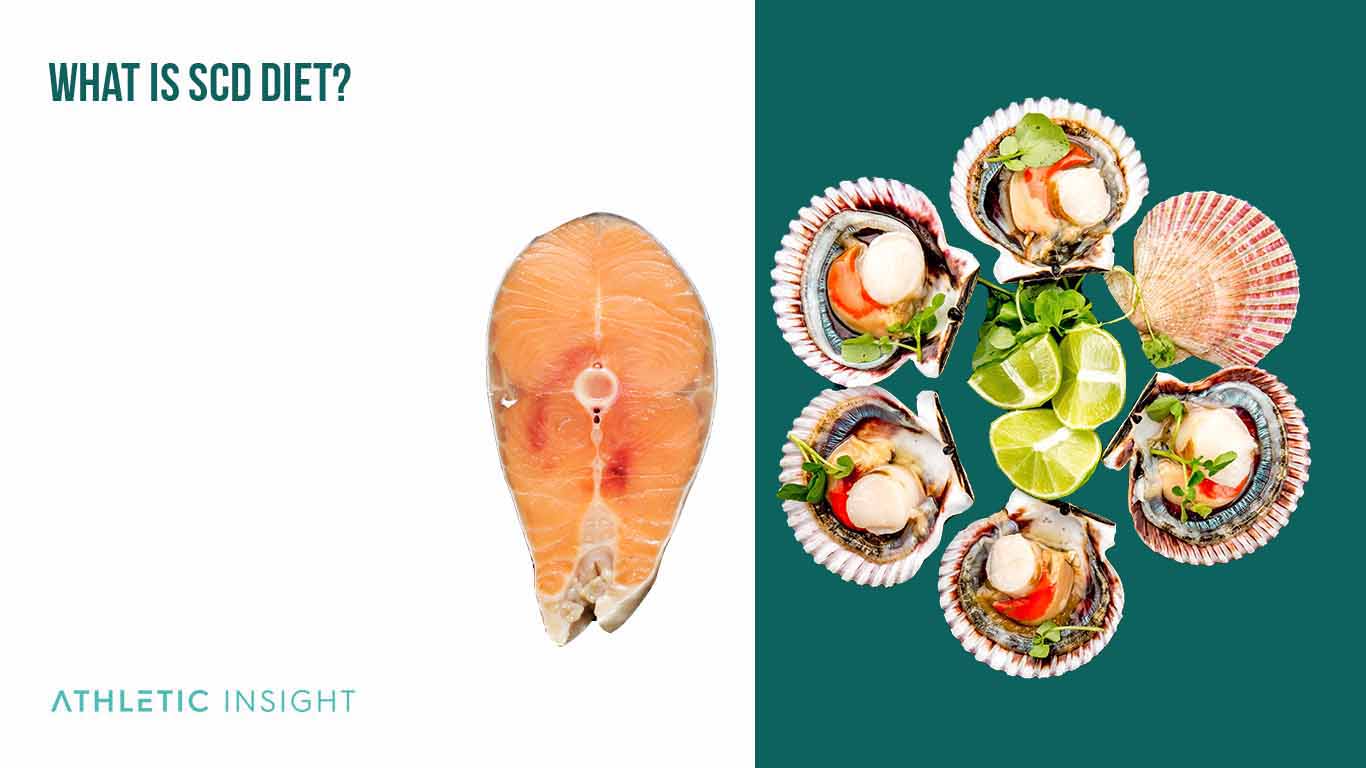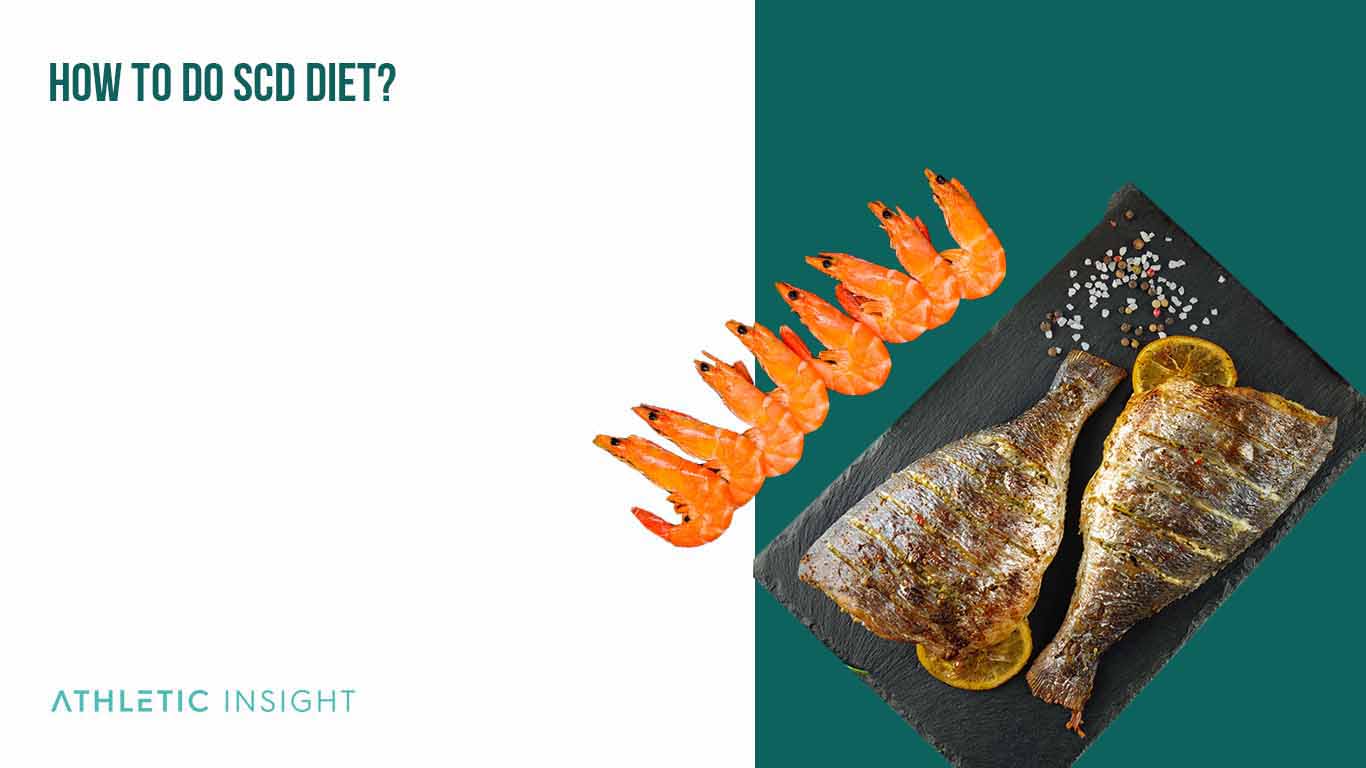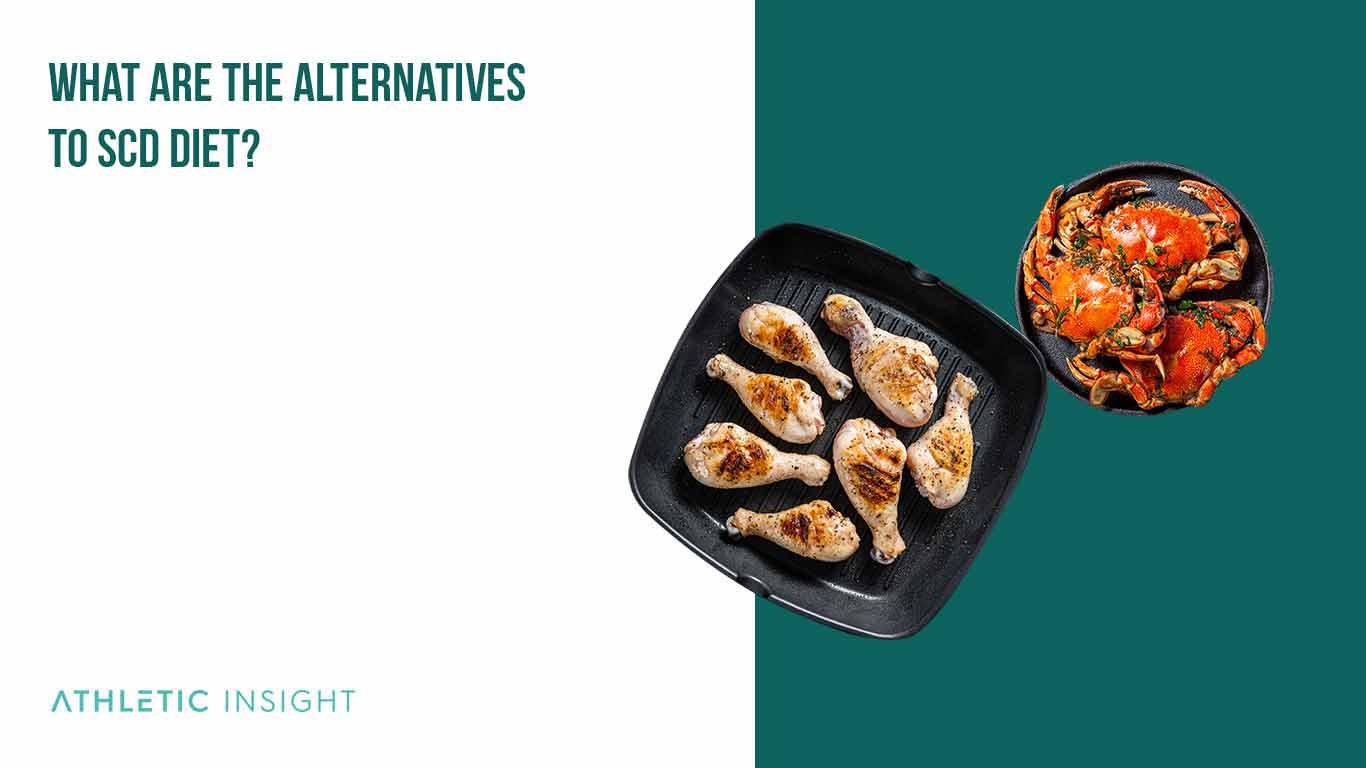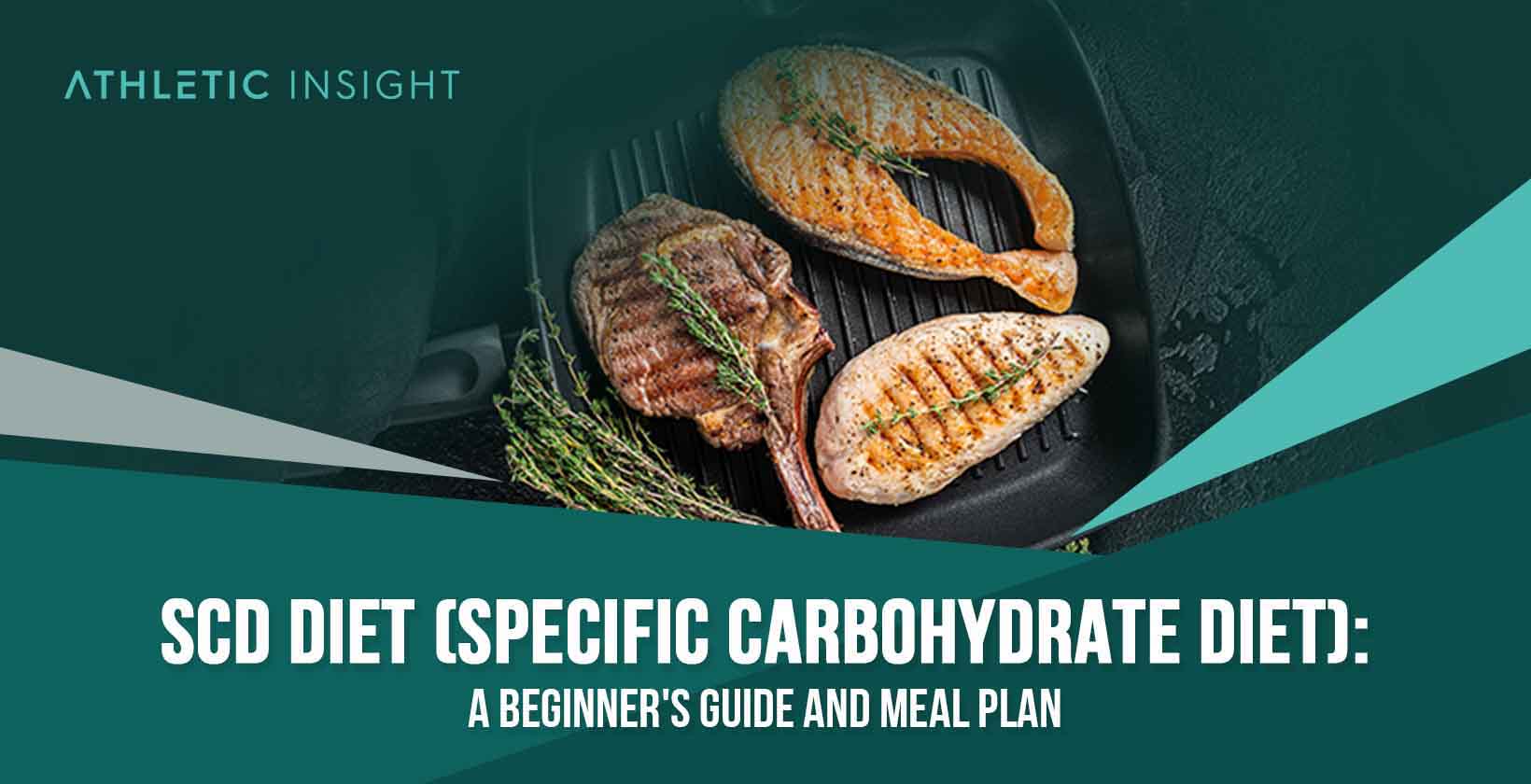The specific carbohydrate (SCD) diet is an increasingly popular dietary approach that restricts foods high in carbohydrates to promote weight loss, improve gut health, and aid overall digestive health. This article provides a comprehensive beginner’s guide to the SCD diet and a meal plan based on this approach.
The purpose of the SCD diet is to reduce the dietary intake of complex carbohydrates, which may cause digestive symptoms such as bloating and gas. It also seeks to reduce sugar and processed foods while increasing nutrient-dense foods. By following this approach, individuals may be able to reduce digestive symptoms and improve overall health.
The potential benefits of the SCD diet include weight loss, improved digestion, reduced inflammation, and potentially decreased symptoms of digestive disorders. However, this diet is not without risks.
Some variations of the SCD diet include the paleo and GAPS diets, which are also low in carbs but higher in proteins. GAPS is more rigorous than SCD and prioritizes brain health. The paleo diet allows for some starches that SCD and GAPS do not, but does not let dieters eat dairy, beans, or legumes.
It can be challenging to follow these diets, and some people may experience side effects such as fatigue, nutritional deficiencies, and difficulty maintaining the diet. As such, it is essential to talk to a doctor before starting this diet and take steps to ensure adequate nutrition.
What Is the SCD Diet?
Sydney Hass, MD, invented the SCD diet in the 1930s to help patients manage celiac disease. However, it was not until the late 1980s that the diet became popular on a wide scale. Elaine Gottschall, a scientist and the mother of one of Haas’s patients who used the SCD diet for ulcerative colitis, published a book outlining the diet along with valuable recipes.

The SCD diet is a type of diet that reduces carbohydrates and can help to reduce inflammation in the gut and improve digestive health. The diet is restrictive, as it eliminates complex carbohydrates such as grains, sugars, and starches. The diet includes dairy, non-starchy vegetables, nuts, seeds, fruits, and proteins.
The SCD diet aims to achieve peak gut health and reduce symptoms of digestive disorders by limiting complex carbohydrates. Scientists and dieticians have studied this planned diet for its potential to treat digestive conditions such as Crohn’s disease and irritable bowel syndrome.
How Does the SCD Diet Work?
The SCD diet works by restricting the intake of complex carbohydrates and sugar. Complex carbohydrates, such as grains and starches, break down into smaller sugars in the digestive process. However, the digestive system cannot fully process all carbohydrates. Bacteria in the gut then ferment these sugars, causing digestive issues.
Restricting these carbohydrates can reduce symptoms of digestive disorders and prevent harmful bacteria from growing in your digestive tract. Additionally, the diet encourages eating nutrient-dense and unprocessed foods, which can help improve overall health.
The SCD diet eliminates grains, legumes, starches, sugars, and processed foods. It also eliminates dairy products, such as cow’s milk and cheese, processed sugars, and other processed foods.
The diet includes allowed proteins, non-starchy vegetables, fruits, nuts and seeds, healthy fats, and low-lactose dairy products. It is important to note that the SCD diet requires strict adherence; any deviation from the dietary parameters could lead to less-than-desirable results.
The SCD diet specifically targets the stomach, colon, intestines, and digestive system. Studies suggest that the SCD diet can be beneficial in reducing symptoms related to digestive disorders, such as Crohn’s disease and ulcerative colitis.
When you first begin the SCD diet, you must consult a doctor and nutritionist to ensure that you follow the diet correctly and meet your nutritional needs. Additionally, you may need to keep a food diary and track your symptoms to understand better how the diet affects you. Your body may react differently to the SCD diet than someone else’s, so it is essential to pay attention.
Many people who start following the SCD diet suffer from digestive problems. If the SDC diet is effective, they will notice improved digestion within a week.
What Are the Health Benefits of the SCD Diet?
Some of the top health benefits of the SCD diet include better sleep, reduced inflammation, improved digestive health, improved overall health, and remission of symptoms of several digestive diseases.
- Better Sleep: Eating meals with fewer carbohydrates can help reduce nighttime restlessness, which may lead to better quality sleep.
- Reduced Inflammation: Restricting complex carbs in the diet can reduce inflammation, which is a primary factor in many chronic diseases.
- Improved Digestive Health: Eliminating complex carbs and eating more nutrient-dense, unprocessed foods can improve digestive health and reduce symptoms of digestive disorders.
- Improved Overall Health: Eating a diet full of nutrient-dense and unprocessed foods can help improve overall health.
- Remission of Symptoms of Several Digestive Diseases: Several studies have suggested that following the SCD diet can reduce symptoms associated with inflammatory conditions such as Crohn’s disease and ulcerative colitis.
What Are the Health Risks of the SCD Diet?
Although the SCD diet benefits many people, some critical health concerns are possible with this diet such as malnutrition, increased bloating and weight loss.
- Malnutrition: The SCD diet restricts several food groups, which can lead to a lack of essential vitamins and minerals. Therefore, it is crucial to supplement your meals with multivitamins and other nutrient-dense foods.
- Increased Bloating: The SCD diet eliminates several food groups and can cause increased bloating. Therefore, it is crucial to monitor your digestion and adjust portions accordingly.
- Weight Loss: One of the unintended consequences of SCD is weight loss. Since the diet is so restrictive, some followers lose weight as they adjust their diet.
How To Do the SCD Diet?
Before you begin the SCD diet, it is essential to consult a doctor and nutritionist. They can help you determine whether or not this diet by eliminating grains, legumes, processed sugars, and other processed foods.

Here is how to do the SCD Diet in a few simple steps.
- Pay close attention to your food choices
- Ensure that you consume enough calories to meet your nutritional needs
- Track your symptoms and keep a food diary to identify the foods causing intestinal problems and check if the SCD diet is not working
- Take things slowly
- Introduce allowed foods one at a time
- Avoid processed dairy products, sucrose, and fructose
The SCD diet is not a one-size-fits-all. You may need to customize it to meet your needs. There are no caloric restrictions while following the SCD diet. You should follow the FDA guidelines and eat between 2000-2500 calories daily.
The SCD diet can be a lifetime diet. It is not a crash diet, and there are few negative consequences for following this diet for long periods. Following this diet for months or years can cause your intestinal problems to recede entirely if you have dietary issues.
You should be aware of some best practices when following the SCD diet. You should include plenty of probiotics, prebiotics, and fiber in your diet. Additionally, drinking lots of fluids throughout the day is best for preventing dehydration. Finally, you should limit your intake of caffeine and alcohol, as these can contribute to digestive problems.
What Are the Foods That You Can Eat While on the SCD Diet?
Foods you can eat on the SCD diet include most fruits, vegetables, grains, legumes, nuts, seeds, healthy fat and proteins.
- Fruits: all fresh, unprocessed fruit
- Vegetables: non-starchy vegetables, including mushrooms
- Grains: you should limit your consumption of grains on the SCD diet
- Legumes: dried beans, lentils, peas, natural peanut butter
- Nuts: any nuts without starch coatings or SCD-illegal ingredients
- Seeds: most seeds, excluding flax, chia, and hemp seeds
- Healthy Fats: cheddar, Colby and swiss cheese, olive oil
- Proteins: fresh and unprocessed meat, poultry, fish, and eggs
You can eat these foods because your body will completely digest them and not leave behind any lingering carbohydrates for harmful gut bacteria to consume. The SCD Diet is a specific carbohydrate diet, so limiting your intake of carbs is the most important aspect of this diet.
What Are the Foods That You Should Avoid While on the SCD Diet?
Foods you should avoid on the SCD diet include processed meat, processed poultry, processed fish/shellfish, meat-based ingredients, eggs, and dairy products.
- Meat: any processed meat or meat products and any meat with additional sugar or additives
- Poultry: any processed or breaded poultry and any with additional sugar or additives
- Fish and Shellfish: any seafood processed with additional sugar or additives
- Meat-Based Ingredients: canned and processed meat
- Eggs: you can eat all types of eggs are allowed on the SCD diet
- Dairy Products: milk and other milk products high in lactose, ice cream, sour cream
In addition to these foods, you should avoid sugar, processed sugar, grains, canned vegetables, starchy vegetables like potatoes, canola oil, and chocolate. You should avoid these foods while on the SCD diet because your body will not completely digest them and leave carbs for the harmful bacteria in your gut to cause inflammation.
Who Should Do the SCD Diet?
The SCD diet is best for people who want to improve their digestive health, including those with gastrointestinal diseases such as Crohn’s disease and ulcerative colitis.
It is important to note that you should not undertake the SCD diet without medical supervision as it can have serious side effects if followed incorrectly. Additionally, this diet is best for those who are generally healthy and looking to improve their overall health by eating nutritious, whole foods.
While there is not a specific SCD bodybuilding diet, weightlifters and bodybuilders with digestive health problems can also follow the diet. The SCD bodybuilding diet can protect your digestive health while giving you ample lean protein to maximize your gains.
How Easy Is an SCD Program To Follow?
The SCD program is not easy to follow because it is extremely restrictive. Restaurants use many ingredients you are not allowed to eat. Additionally, the SCD program requires a lot of meal planning and preparation to ensure that all meals are SCD-friendly. It is essential to have the discipline to follow the SCD diet properly.
What is a Sample SCD Diet Plan?
A sample meal plan for the SCD diet can be found below.
Day 1
- Breakfast: Gluten-free banana bread
- Lunch: Asian meatballs with zucchini noodles
- Dinner: Paleo Thai curry
Day 2
- Breakfast: Avocado, bacon, and eggs
- Lunch: Baked chicken with roasted vegetables
- Dinner: Chicken piccata
Day 3
- Breakfast: Grain-free breakfast oatmeal
- Lunch: Carrot mint bisque
- Dinner: Roasted pork chops with vegetables
Day 4
- Breakfast: Pumpkin spice breakfast cookies
- Lunch: Grilled apple sandwiches and a side salad
- Dinner: Pulled pork short ribs
Day 5
- Breakfast: Paleo and nut-free cinnamon roll bread
- Lunch: Cauliflower mac and cheese
- Dinner: Eggplant Cannelloni
Day 6
- Breakfast: Flourless banana zucchini loaf
- Lunch: Avocado, tuna, and egg salad
- Dinner: Seared scallops with a mint pea puree
Day 7
- Breakfast: Spicy sausage patties with fresh fruit
- Lunch: Tuna cakes with sliced fruit
- Dinner: Mexican beef stew
What Are the Best Recipes for the SCD Diet?
Some of the best SCD diet recipes include white butternut squash lasagne, gluten-free quiche lorraine, instant pot ground beef chili, Italian braised chicken thighs, and Tex-Mex chicken soup.
- White Butternut Squash Lasagna: Substituting squash for pasta makes for a grain-free lasagna you can enjoy on the SCD diet.
- Gluten-Free Quiche Lorraine: Make a classic quiche with almond flour and bacon for an SCD-friendly meal.
- Instant Pot Ground Beef Chili: Using an instant pot makes this dish come together quickly while sticking to the SCD guidelines.
- Italian Braised Chicken Thighs: Chicken thighs make for a flavorful SCD-friendly dish that will impress your friends and family.
- Tex-Mex Chicken Soup: This SCD-friendly soup is full of flavor and nutrients for a satisfying meal.
What Are the Facts About the SCD Diet?
There are some critical facts about the SCD diet that you should know, including what happens to your body, potential weight loss, the health benefits, the length of time you can follow the SCD diet, and the daily caloric intake.
- Your Body’s Reaction: During the first week of the SCD intro diet, your body will react strongly. There is a good chance that your digestion will improve and you will sleep better.
- Weight Loss: You may experience unintentional weight loss as you change your diet to align with SCD guidelines.
- Health Benefits: The SCD diet can help with digestive health problems and reduce inflammation.
- Length of Time: It is best to follow the SCD diet for at least a few months to reap its full benefits.
- Daily Caloric Intake: On the SCD diet, you should aim to consume around 1,800-2,000 calories daily. It would be best if you do not go lower than this number.
The SCD diet is naturally low in saturated fat and cholesterol, but it is not necessarily the best diet for weight loss. While you may lose weight if you are on the right diet, people who turn to the SCD diet have typically already been losing weight due to digestive issues. During the first week of the diet, you may begin gaining back the weight that you lost.
How Much Does the SCD Program cost?
The SCD program is free to implement. You can find the exact requirements for the diet on many websites on the internet. Several books you can purchase that cover the diet in detail for around $20. If you decide to follow the SCD program, buying groceries will cost you around $150 to $200 per week, as fresh, whole foods are often more expensive.
What Are the Alternatives to the SCD Diet?
If the SCD diet doesn’t seem like the diet for you, many alternatives exist such as the Paleo, Mediterranean, and Ketogenic diets.

- Paleo Diet: The Paleo diet mimics the eating habits of ancient humans and includes plenty of vegetables, fruits, nuts, and lean proteins.
- Mediterranean Diet: The Mediterranean diet emphasizes fresh fruits, vegetables, whole grains, legumes, and healthy fats.
- Ketogenic Diet: The Ketogenic diet is high in fat and low in carbohydrates, which can help you lose weight quickly.
What Does an SCD Diet PDF Involve?
An SCD Diet PDF has all the information you need about the diet and instructions on getting started. It will include meal plans, recipes, food lists, and links to additional resources. The PDF usually contains detailed instructions on what to eat and not to eat and a detailed description of the diet’s health benefits.
How To Find a 3D SCD Diet Printable Plan?
You can find a 3D SCD Diet printable plan on the internet through a simple google search. You can also find SCD diet food list PDFs for easy reference.
What Is the Difference Between the SCD diet and Omad Diet?
The SCD diet and the Omad Diet are both restrictive diets. The main difference between them is that the SCD diet involves eating three meals daily with two snacks, whereas the Omad Diet involves one meal daily. Additionally, the SCD diet emphasizes whole foods and limits processed foods, while the Omad Diet does not.



